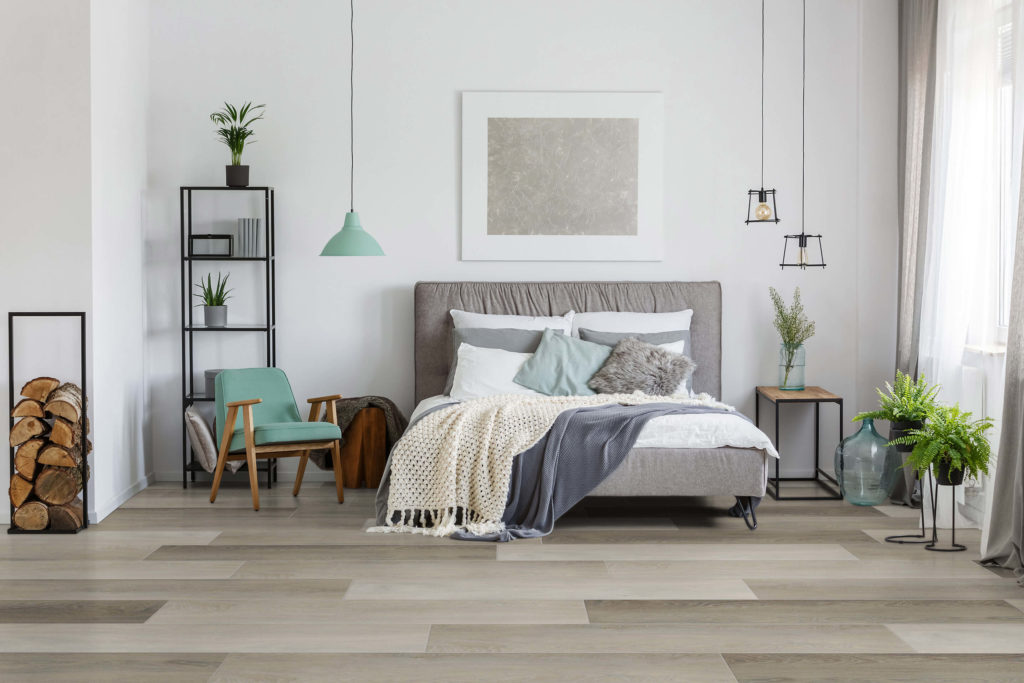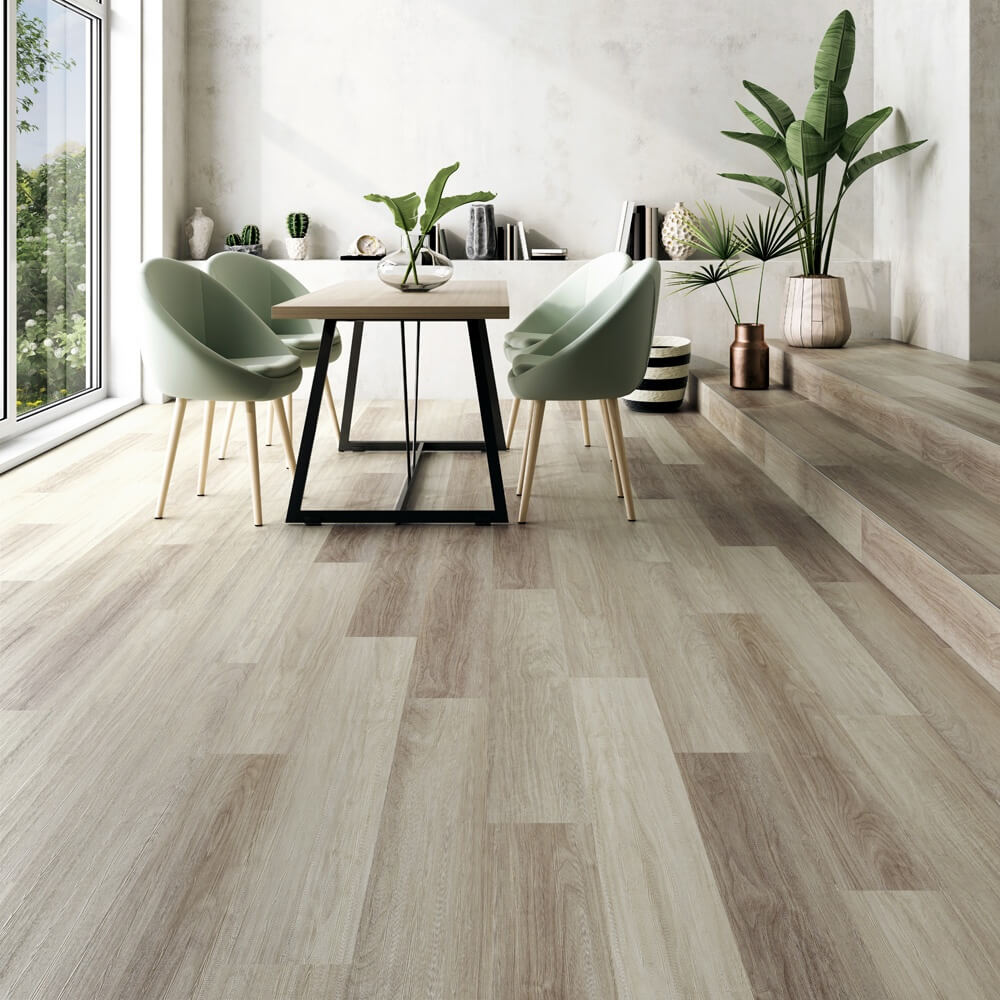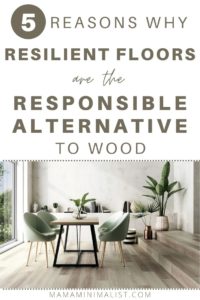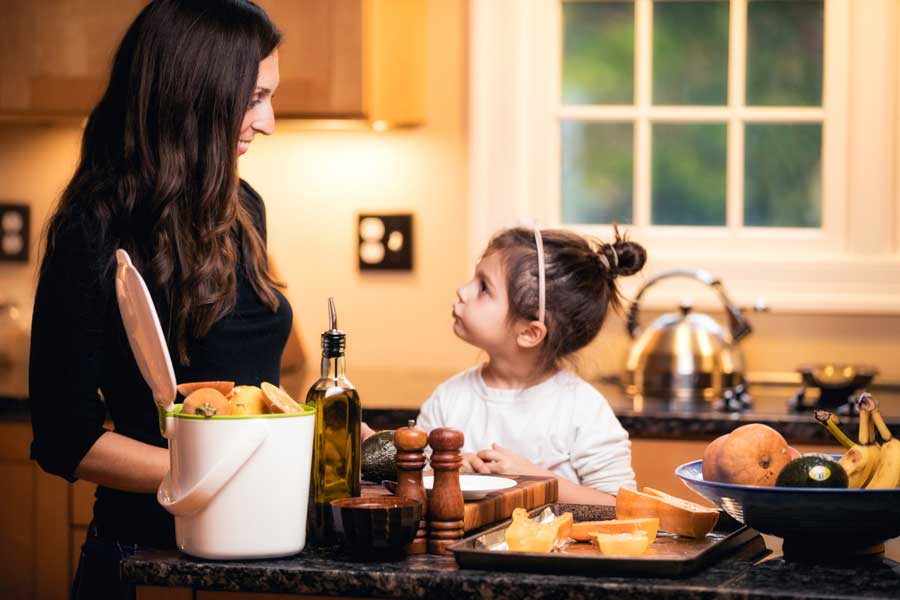What is Resilient Flooring?
What is resilient flooring?
Here’s why the eco-friendly flooring choice may not be bamboo.
By Rachel Winters
Environmentalists have traditionally adored bamboo as a flooring material because of bamboo’s growing ease (no chemicals needed!) and speed (so fast!). But bamboo cultivation isn’t exactly benign from an environmental standpoint: are bamboo floors actually the eco-friendly choice? What is resilient flooring, and could it be considered sustainable?
I had these questions and more when I decided to replace my bamboo floors, which had been in my home since 2006. The original owners put them in and – even though they were only 14 years old – they were fairly beat up when we moved in.
Two kids and one dog later, our bamboo floors went from somewhat scratched to downright destroyed.
They needed replacing, and STAT.
There are many decisions when it comes to making informed, eco-conscious choices in the home and the process of researching can quickly become overwhelming.
And because flooring is also an expensive investment, overwhelm can quickly become debilitating.
That’s why it’s important to know all of the options before you make a choice.
(Note: While this post is sponsored by BeautifullyResponsible.com, all opinions are my own.)

Bamboo’s problems
Bamboo is an affordable and natural flooring material. But bamboo flooring isn’t as sustainable as you might assume, and here’s why:
1. Bamboo isn’t particularly resilient.
Bamboo isn’t water-resistant; it scratches easily, too.
The result? You’ll likely find yourself replacing bamboo floors much sooner than other materials.
2. Growing bamboo results in decreased biodiversity.
Bamboo is popular, and consumers rely on bamboo for furniture, floors, and even clothes.
An increase in bamboo demand means that standing forests may be cut down to make room for cultivation.
3. Bamboo isn’t always FSC certified.
A certification from the Forest Stewardship Council (FSC) means that the material came from a sustainable source with responsible management practices.
But because of demand, some manufactures source their bamboo from non-FSC certified resources to lower the cost.
4. Bamboo’s installation may result in poor air quality.
Almost all wood or vinyl flooring installation results in poor indoor air quality: the adhesive used to place the planks contains formaldehyde and can off-gas for many years.
You get what you pay for. There are some quality bamboo flooring companies that are FSC-certified and will last longer than the cheaper products, so this could be a reasonable option if you refuse to give up on real wood.
Prefer Audio?
You can find The Sustainable Minimalists podcast (and much more!) wherever you listen to podcasts.
Apple Podcasts | Google Podcasts | Spotify | Stitcher
What is resilient flooring?
Resilient flooring is an umbrella term that describes resilient flooring types, including rigid core and flexible luxury vinyl, vinyl composition tile, linoleum, vinyl sheet, rubber, and cork flooring.
The most common resilient floors are vinyl, cork, and rubber.
Resilient flooring is a category of flooring products and – because resilient flooring is built to endure daily life – it gets its name for its ability to spring back into shape.
The Resilient Flooring Covering Institute (RFCI) began in 1976 with the goal of unifying the most resilient flooring from the highest quality manufacturers of tile and vinyl in the world.
RFCI prides itself on sourcing the best flooring for both your home and for the planet.
RFCI lists its manufacturers on their website so you can easily choose a company that meets your standards. RFCI does the research for you and expects only the best.
Why resilient?
Resilient flooring such as luxury vinyl is incredibly popular because it looks like wood but is more comfortable to stand on; it’s durable and withstands family life, too.
As an eco-minimalist, I trust RFCI for 5 reasons:
1 – They seek out recycled or upcycled materials.
RFCI sources materials that are not only replenished natural sources but were recycled or upcycled as well.
The best part? When your flooring reaches the end of its life, contractors can send it back for repurposing into new flooring.
2 – RFCI understands that resilient materials outlast wood.
They use the Certified NSF lifecycle assessment to assess a product’s durability as it relates to its cost.
When you search for resilient flooring products, be sure to check out the Environmental Product Declaration, which will tell you the life cycle impacts of a product.
3 – Their products boast low emissions.
RFCI knows that consumers spend an average of 90% of their time indoors, so RFCI relies on a “FloorScore Certification” to ensure as little off-gassing as possible.
4 – RFCI prioritizes a small global impact.
No eco-guilt to see here!
5 – They are committed to transparency.
RFCI’s companies must be crystal clear about their products’ compositions to remain in the Institute.

How does resilient flooring compare to real wood?
I know what you’re thinking. Real wood feels natural; it looks better, too. Resilient just can’t compare with the aesthetics that wood offers.
Right?
The old me would have agreed, as I was a die-hard wood floor lover. But when I bought my home and dealt with daily maintenance, my views changed.
The most important floor attributes for me were the following:
1. I wanted it to last forever and be low maintenance.
2. I wanted to have ZERO eco-guilt about where the products were coming from (and not simply cut down plants because plants are renewable).
3. I wanted the healthiest option for my family.
4. I wanted a material that could be recycled, upcycled, or repurposed when I was done with it (not just end up in a landfill).
And after dealing with years paranoia from furniture dents and scratches on my bamboo floors, I knew I was ready to bid adieu to bamboo and welcome resilient floors with open arms.
Learn more
Visit BeautifullyResponsible.com to view their product gallery and learn more about resilient flooring!
Follow @ResponsibleFloors on Instagram and Pinterest to get all the latest updates!
Rachel Winters lives in Salt Lake City, Utah. She is a mom of 2 boys and works as an environmental health scientist, so environmental issues are a close passion for her. Rachel considers herself a work-in-progress minimalist. She constantly strives to find more stillness in her head and in her home. Rachel and her husband both love 90’s alt-rock & the mountains. They can be found snowboarding in the winter and in the warmer months hiking or backpacking with their Husky-mix, Cooper.
Stay in-the-know!
Sign up for monthly eco-minimalist inspiration.


